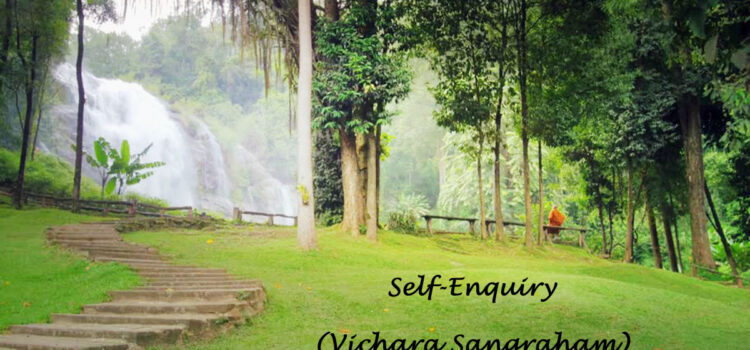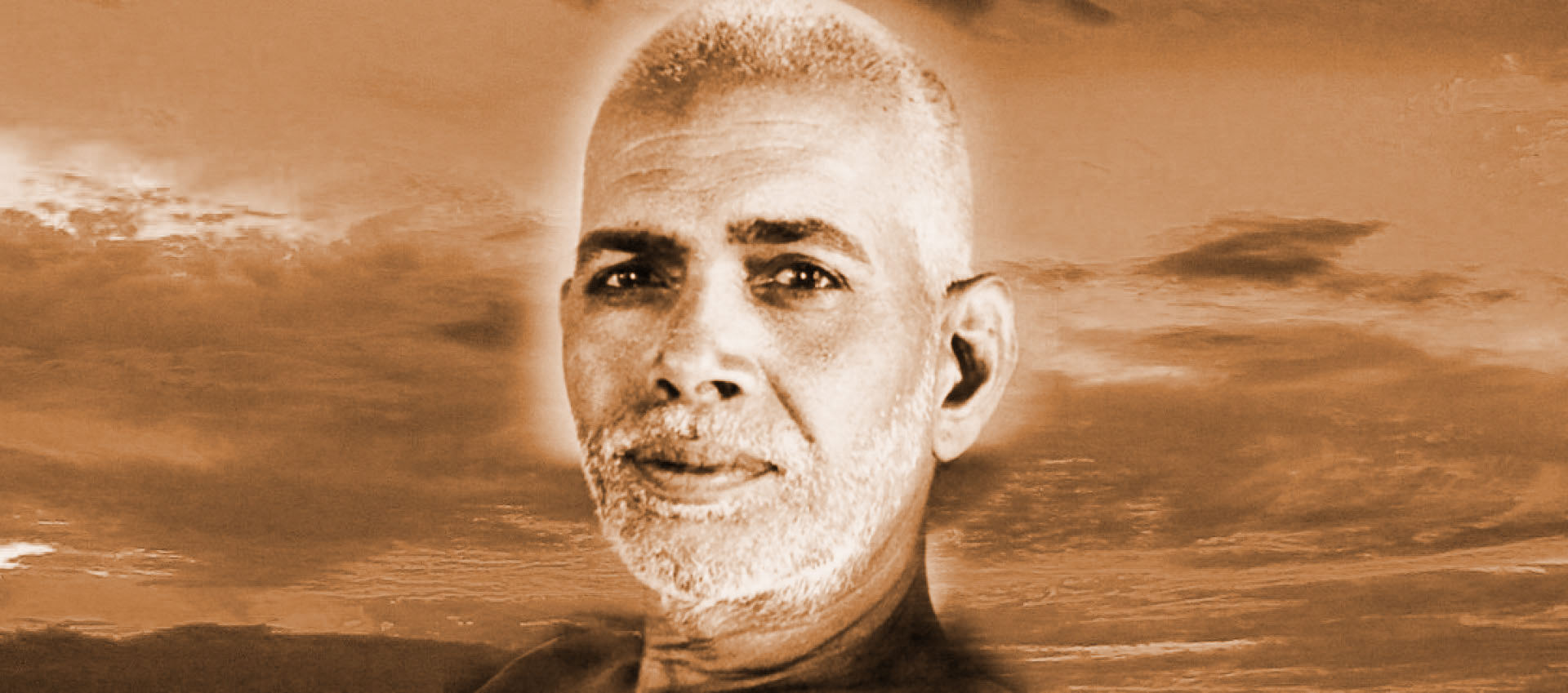
Self-enquiry – Vichara Sangraham (18)
(18)
Devotee:
D: How do the three states of experience, the three bodies, etc., which are imaginations, appear in the Self-light which is one, impartite and self-luminous? Even if they should appear, how is one to know that the Self alone remains ever unmoving?
Maharshi:

|
|
The Example |
The Exemplified |
| 1 | The Lamp | The Self |
| 2 | The door | Sleep |
| 3 | The door-step | Mahat-tattwa |
| 4 | The inner wall | Nescience or Ignorance or causal body |
| 5 | The mirror | The egoity |
| 6 | The windows | The five cognitive sense-organs |
| 7 | The inner chamber | Deep sleep in which the causal body is manifest |
| 8 | The middle chamber | Dream in which the subtle body is manifest |
| 9 | The outer court | Waking state in which the gross body is manifest |
The Self which is the lamp (1) shines of its own accord in the inner chamber, i.e., the causal body (7) that is endowed with nescience as the inner wall (4) and sleep as the door (2).
When by the vital principle as conditioned by time, karma, etc., the sleep-door is opened, there occurs a reflection of the Self in the egoity-mirror (5) that is placed next to the door-step – Mahat-tattva.
The egoity-mirror thus illumines the middle chamber, i.e., the dream state (8);
and, through the windows which are the five cognitive sense-organs (6), illumines the outer court, i.e., the waking state.
When, again, by the vital principle as conditioned by time, karma, etc., the sleep-door gets shut, the egoity ceases along with waking and dream, and the Self alone ever shines.
The example just given explains how the Self is unmoving, how there is difference between the Self and the egoity and how the three states of experience, the three bodies, etc., appear.
~~~~~~~~
Note :
Self-enquiry – Vichara Sangraham is the first set of teachings that Ramana Maharshi ever offered. It was offered at about 1901, when he was a young man of about twenty-two. He was already a Jnani (Sage) in perfect Realization of the Self, in the resplendent bliss of Divine Knowledge. At that time he was living in Virupaksha Cave on the hill of Arunachala.
A number of disciples had already gathered round him. Although he had not actually taken a vow of silence, he seldom spoke, and so wrote his replies to certain questions put to him by Sri Gambhiram Seshayya, one of the earliest devotees. Sri Seshayya copied them in his diary. After his passing away, this diary was obtained from his brother. This was edited by Sri Sivaprakasam Pillai and was later put into Question-Answer form by Sri Natanananda. It was published under the name of Vichara Sangraham, or Self-Enquiry.

